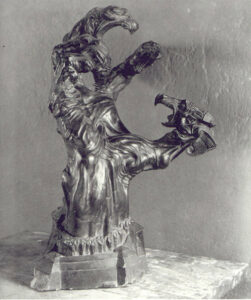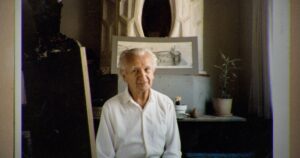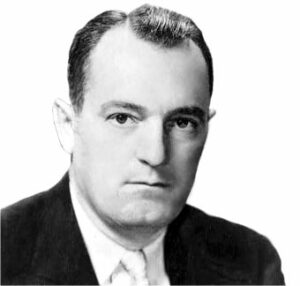Jordan Dane
@JordanDane

Wikimedia Commons – Author Cliff (GIANT PACIFIC OCTOPUS) https://www.flickr.com/people/28567825@N03
An intrepid anonymous author has submitted their first 400 words of “The Nature of Things” for critique. My feedback follows. Please help this author and provide your constructive comments, TKZers. Enjoy.
***
“Couldn’t have happened to a nicer fella,” said the reporter.
Anna perused the mutilated body. Damage to the head. Impressive gash in the temple and the empty eye sockets.
“Who or what do you think did this?” the reporter prompted. “You were invited out for an expert opinion. Do you think a man or animal killed him?”
The cuts to the head and upper torso were massive and random. It was hard to recognize the face with most of it eaten.
The salty Oregon coastal breeze wafted into the cave opening. It mingled with the stench of rotting flesh warming in the sun. The smell of death has many scents.
“Looks like our friend here met up with some pretty irate sea dweller,” she said. “I’m thinking giant Pacific octopus.”
“How so?”
“See the cuts? How they’re sometimes random, then more concentrated at the injury sites? Looks like damage from an octopus beak to me. Sliced open the soft spot near the temple to get to the soft stuff inside.”
A grisly sight to behold. More hideous than the one she saw one night long ago. Same result. Different circumstances.
“You recognize this guy at all?” the reporter said.
“Why would you say that? Not much left here to recognize.” said Anna.
“No particular reason. You being a marine biologist in this area, thought maybe you might have seen someone hanging about the coastline lately.”
“I’m mostly out in the big ocean. Deep sea. But a person can get lost very easily if they want to.”
Like Pa’s buddy, Ray, from the Viet Nam war. Ray wanted nothing to do with people after being discharged and returned to the states. The hatred and name calling were too much to take. One of the reasons Momma and Pa had moved so far out in the woods of Oregon. Homesteading far away from the prying eyes of local busybodies. Small towns are like that. Gettin’ in other peoples’ business was not just normal. It was a way of life.
She said, “My guess is he went diving in this cave and surprised a trapped and hungry animal. Tentacles most likely grabbed his head and the beak started gnawing away.”
“Detectives just left,” he said checking his notes. “They noted extra shoe prints in the sand. Must’ve had somebody with him.”
“It’s a public beach. Footprints could be from anyone. Anytime,” Anna said.
FEEDBACK
OVERVIEW – I enjoyed this author’s “stick to the action” writing. The author jumps into dialogue without over-explaining the action.
POLICE PROCEDURE ISSUES – Right off the bat, I’m left wondering how a reporter would be inside the crime scene tape, which is the way this appears. Anna (whoever she is to the investigation as an expert) is examining the body, up close. She’s carrying on a conversation with a reporter as they apparently stand over the body.
Standard police procedure is that medical examiners or coroners (there’s a difference) would make the call on the cause and manner of death. The ME or coroner would take charge of the body and would not leave the corpse behind or bring in anyone at the scene to give an opinion on how the person died. That would be done in the autopsy, if the examiner needed the assistance.
For avid crime fiction readers, this opener would read as implausible for these reasons. That’s a “throw the book against the wall” error, in my opinion. Despite what I may like about this author’s writing, I’m not as forgiving on poor research and lack of knowledge on police procedure.
OCTOPUS KILLS HUMAN? – This seemed odd to me. I had to query it online. Most octopus or squid can cause harm to a human, but not death. Many species are venomous, but they’re mainly harmful to their usual prey and not harmful enough to kill a person. The Humboldt Squid is known to attack a human being en masse and there are videos of these attacks. Very creepy. Is this story about a giant squid or octopus? There’s not much known about them, only if they are found dead and can be studied. If this story is about the JAWS equivalent to a giant octopus, introducing that possibility through Anna in the first scene seems too soon. It would be best to build on the suspense.
GENERAL QUESTIONS – Why would the reporter say, “Couldn’t have happened to a nicer fella” in the first line? There’s no follow up on why the reporter disparaged the dead man. Then the reporter asks Anna if she knew the dead guy, without offering an identity. It would appear that the reporter doesn’t know the dead man either, so why the first line insinuation?
Why keep Anna’s last name a secret? This excerpt reads like a first draft with details stripped out. Now is the time to layer in details that don’t overwhelm the reader and slow the pace, but will add a gripping setting with details of who is on that beach with the corpse.
There’s also an assumption that the corpse is dead because a man or animal killed him (the reporter asks). A body could’ve been dumped in the water with animals eating at the corpse or damage sustained from churning in the water over rocks. The reporter is asking questions and leading the reader by TELLING what they should know. I would suggest that if Anna is the expert, let her examine the body and give her opinion to a detective or medical examiner/coroner. A reporter would be the last person allowed onto a crime scene when the body is still exposed. Also, if I were the reporter who got beyond the police barrier, I would be taking photos with my phone. Asking questions is secondary to getting those gruesome pics.
Why would the eyes have been eaten out of the body? Would an Octopus be so selective? Seems like a delicate procedure to focus on the eyes like that.
SHOW – DON’T TELL – In the dialogue lines, the reporter tells Anna what the author wants the reader to know. A sneaky way to TELL and not SHOW. Here are some examples of TELLING lines:
Reporter: “You were invited out for an expert opinion…” (Anna would already know this. A reporter would not.)
Reporter: “You being a marine biologist in this area, thought maybe you might have seen someone hanging about the coastline lately.” (Again, Anna would already know her occupation, but why would the reporter know?)
Reporter: “Detectives just left,” he said checking his notes. “They noted extra shoe prints in the sand. Must’ve had somebody with him.” (Reporter is TELLING the reader what the author wants them to know. Why isn’t the detective the one talking to Anna? And why isn’t she the ME or coroner? The author must do the research to make this more plausible.)
Maybe make Anna be the person who spotted the body on the beach and called it in to the police. She’d be involved and have to be questioned on the spot. A reporter wouldn’t be allowed near the body, especially if the next-of-kin notifications have not been done. Major No No.
BACKSTORY DUMP OUT OF CONTEXT – Because of the spartan style of this author’s voice, not much is known about Anna. Not even her last name. The excerpt below feels out of context. I would prefer the author stick to the action and layer in more details of the setting and the feeling of standing over a gruesome body than to read the details below that could be pieced in later when they fit better.
Like Pa’s buddy, Ray, from the Viet Nam war. Ray wanted nothing to do with people after being discharged and returned to the states. The hatred and name calling were too much to take. One of the reasons Momma and Pa had moved so far out in the woods of Oregon. Homesteading far away from the prying eyes of local busybodies. Small towns are like that. Gettin’ in other peoples’ business was not just normal. It was a way of life.
SETTING CAN ENHANCE THE SCENE – Is the weather cold and windy? What are the waves doing? Are they a calm ebb and flow of water or do the waves dramatically crash onto a rocky shoreline? The Oregon coast is mostly rocky, but pick a spot and describe it so a reader from the area recognizes the setting.
How does the sea mist and air feel on her skin as she stares down at a grotesque corpse? Sand carried in the wind and salty sea air can feel gritty on the skin. The brackish water has a smell that can mingle with the stench off a putrid corpse. Is the body tangled with seaweeds? Have other creatures crawled onto the body as the ocean laps around it?
I would recommend focusing on selective details that ADD to the setting and the emotion the author wants the reader to feel when they read this intro. Don’t write volumes that slow the pace, but pick the most essential descriptors that will trigger memories in the reader, even if they’ve never visited the Oregon coast.
CHARACTER ESSENCE – I had mentioned that the backstory dump seemed out of context, but nothing is known about Anna up until that point. Let the reader in on who she is without TELLING the reader in that backstory dump. The same way it is important to stick to the action and not TELL the reader about the character, try sharing details about Anna that SHOWS who she is.
What is she wearing? Does her clothing and other details say anything about who she is? Proper footwear? Jewelry? How does she fix her hair? Are her nails short or long, polished or not? You don’t need to describe all of these points, but have an idea who she is and pick the most essential ways to show the kind of woman she is to the reader by subtly filtering the most essential details into the narrative.
Is she repulsed or clinical about examining the corpse?
Is she observant about the details of the body AS WELL AS the details of the whole crime scene and who is there?
If Anna is the star of this story, the author could set her up better than the way she comes across in this intro. The reporter seems to know more than she does, for example. I have some suggested changes listed below:
SUGGESTED CHANGES – SUMMARY:
Pair Anna up with a detective that might challenge her. Have there be friction between them because she is an outsider and not a detective. If she proves to be a necessary expert where the detective is forced into using her, the friction you start with will only enhance the story line. Have her mind work like a detective as she clinically examines the dead body and doesn’t act squeamish. Any dialogue in an introduction like this could be like reading a game of cat and mouse. The lines would SHOW who these two are and how they’re matched for each other. Have him obviously trying to get her insights then try to get rid of her, while she keeps adding things that make him wonder if she might help him more. Do they know each other from the past? That could be fun.
Layer in more setting that enhances the morbid scene. That would be delicious.
Tease the reader with what killed the man and not spill the beans right away. It’s very cool that we could be talking about a giant octopus – an 8-legged JAWS creature. Milk that. I can hear the dialogue between the detective and Anna now. He thinks he knows how the guy died. Body dump. The sea and its creatures did the damage, but what if at the end of the scene, Anna breaks the news that the man died from a rare octopus attack. Have her hint that it’s not the first as she walks away. That could be a chilling start.
OVERALL – I really liked the voice of this author. Like I said before, this reads like a first draft and stark, bare bones writing. But it’s a good place to begin to fill in details that can only enhance the writing. Many of the typical beginner mistakes are not raging in this intro. Yes, the lack of crime scene research would be a deal killer for me as a reader, but if the author has a good foundation on writing, the research can be learned and developed. There’s lots to tweak with this beginning, but there’s a great deal of promise here. Good luck with your project, anonymous.
DISCUSSION:
What do you think, TKZers? Provide your feedback in your comments.











